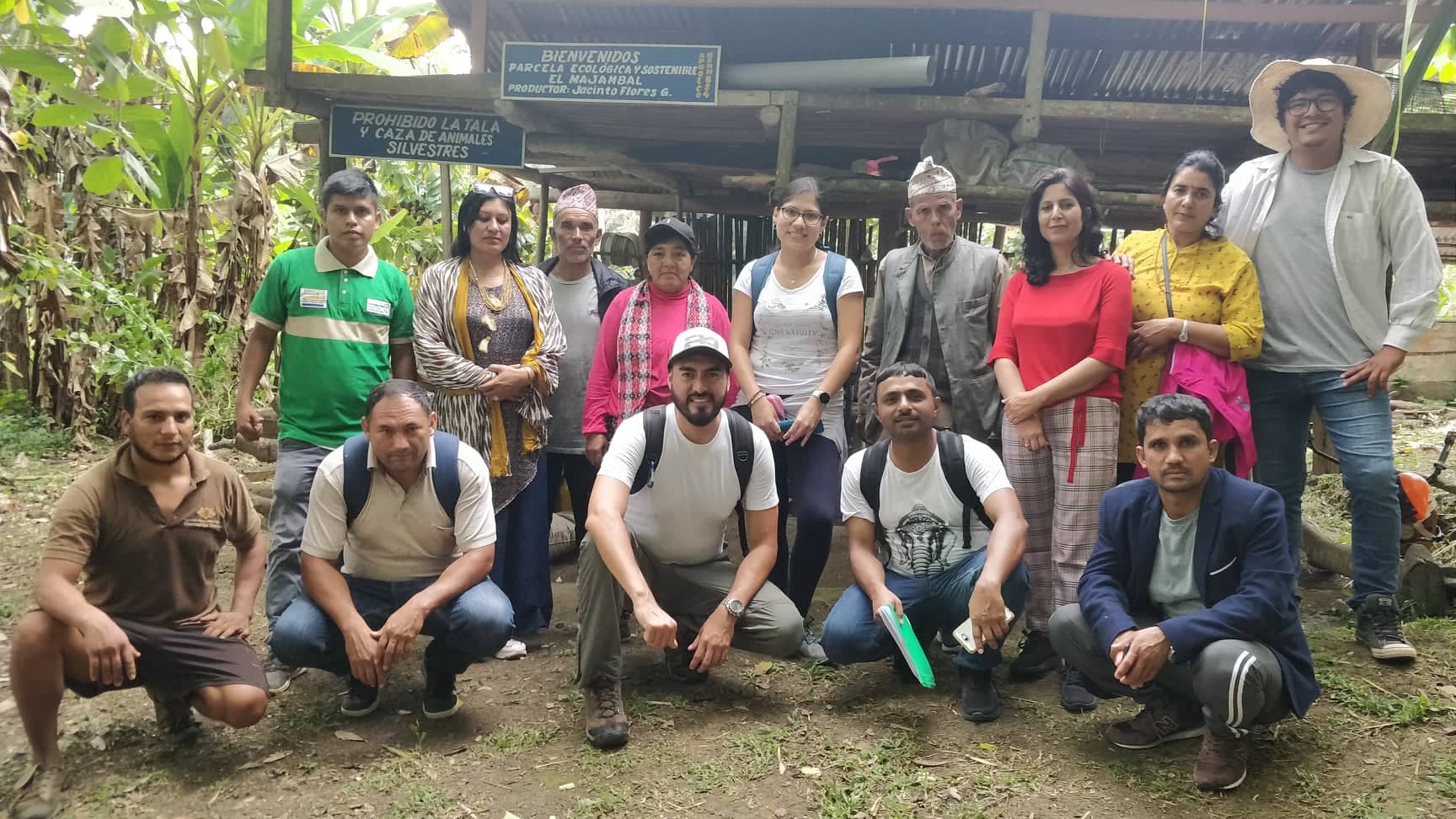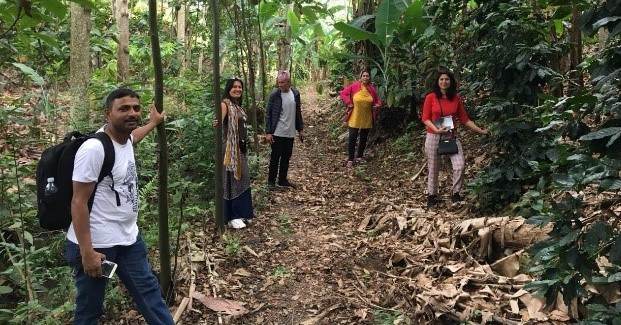It may seem unlikely, but your morning cup of coffee has enormous power and significance. In some cases, the production of coffee can result in depletion of natural resources and socio-economic conflicts. Alternatively, it can offer huge social, cultural, environmental and economic benefits to those who grow this unique crop.
At Practical Action, we understand that by taking care of the soil and encouraging biodiversity, coffee farmers can help protect the environment and adapt their livelihoods to cope with climate change. Coffee is an important income stream for farmers in several of the countries we work in, particularly Peru and Nepal. In these countries, we work with smallholder coffee farmers to help them negotiate bureaucracy, achieve the relevant certifications and get a fair price for their harvests.
Coffee is also a very special crop because it unites farmers from very different parts of the world – it’s one of those rare commodities that brings cohesion and a sense of “we feeling” among cooperative coffee farmers. Perhaps this sense of unity echoes the feeling of togetherness we all feel when we’re sipping on our morning brew!
Coffee culture is on rise globally, with a record 168 million bags (ICO, 2019) produced last year
In recent years, coffee farmers are facing several challenges around maintaining the quality and volume of their coffee harvests. Pests and diseases, deforestation, soil degradation, dry lands and climate change are causing big losses. If the world is to continue enjoying its favourite hot beverage, we need to explore solutions without further delay.
 Bringing farmers together
Bringing farmers together
In typical Practical Action style, we approached this challenge through cross-cultural learning and co-operation. Last month, we organised a learning exchange trip between two global souths: Peru and Nepal. A team from our Nepal office, the chairperson of a Nepali district coffee cooperative from Sindhupalchowk and a group of coffee farmers visited coffee farms in the rural areas of Peru. Here, they learned about the different techniques and practices of growing coffee as a result of different projects and research that our Peru team have been doing in the region for over two decades. This exchange is expected to bring new hopes and excitement among coffee famers in Nepal – as well as new learning and techniques to enhance the quality and productivity of their coffee.
Coffee technologies, practices and innovations

We visited coffee farms, proposed agro-tourism area, and had a chance to see green businesses initiatives in two Northern provinces: San Martin and Cajamarca. It was exciting to see how farmers are adopting different technologies and practices in their coffee orchards.
The Nepali farmers learned that it’s not always important to have new sophisticated equipment. Judicious use of simple technologies and practices can make a big difference in quality coffee production. What we observed in the coffee orchards in San Martin included:
- Planting design maintaining the proper distance between rows and spacing of the plants
- Agro-forestry system of orchard management with good diversification of trees, shrubs, herbs, and other interesting crops/activities like cocoa, bamboo, and beekeeping and fish farm integration
- Fertigation (Drip irrigation with fertilizer)
- Mulching and cover crops
- Pheromone traps to control pests
- Contour bunding/planting to prevent erosion of soil


The integration of cocoa, bamboo and trees into coffee orchards is providing additional income to the farmers. This diversification is helping them to deal with fluctuations in coffee prices. We visited the COOPBAM cooperative farm, where we watched cocoa processing equipment, including a solar-powered dryer, and a chocolate production plant.
In the Cajamarca region, we visited farms that had benefited even further from our help encouraging diversification of income. Besides coffee production, the farmers have started to explore their potential to develop new green business options, such as agro-tourism, with the introduction of a coffee shop.
Another of these new businesses is the rearing of guinea pigs. This was particularly interesting because of its circular economy approach. A plant growing wild on the coffee farm, which is prized for its ability to add nitrogen to the soil, is used to feed the guinea pigs. The animals’ manure is then used to fertilise the soil, creating a virtuous circle that benefits both the crop and the wider ecosystem.
Innovation, coffee culture and conservation
We talked to members of a women’s association, which is a group of female entrepreneurs who had the bright idea of re-using the coffee waste created during the pulping process to make coffee powder for biscuits and cascara tea.
We also visited coffee shops in the nearby city of Jaen, opened by a farming family who specialise in high quality coffee. We were lucky enough to enjoy a tasting of this delicious brew. The shop offers such tastings to consumers once a week in order to encourage a “coffee culture” in the town, which despite having some of the best export quality coffee of the country doesn’t get much local interest. Apart from drinking coffee, the coffee shop was a place where you could take your laptop and work, read books, and find out about the heritage behind the quality cuppa.
We had also opportunity to visit agro-tourism area in Cajamarca with the town’s Mayor, where wet land was protected with bird conservation alongside with coffee orchards.

Coffee shop.

Coffee biscuits made from coffee powder.
A learning experience
The Nepalese farmers were very encouraged by the motivation, commitment and persistence that the Peruvian farmers had put into their coffee orchards. It was inspiring to see how coffee farmers have gradually enhanced their technical knowledge, capacity and links with government and other stakeholders over the years. The Nepalese farmers expressed the strength of coffee production of Nepal in terms of selective harvesting of coffee, coffee processing and institutionalized process of coffee production and marketing. We talked a lot about the value and benefits of a cooperative model of coffee production and marketing.
Our Peruvian colleagues were really interested to know the role of the Nepal government and Community Forest User Groups on the protection of the forest and how they came to agreements over time that led to low rates of deforestation in the whole country.
“I have learnt lot about coffee technologies and practices which I will implement in my coffee orchard. More than the technologies and practices, what I liked most is entrepreneurship and commitment of farmers for coffee. I never thought that one farmer could do that much alone”- Yam Bahadhur Thapa, coffee farmer, Sindhupalchowk District
“Diversification (Multi-strata agroforestry including cacao) in the coffee orchard is what I liked the most. The orchard looks clean and well managed. We need to translate our learnings into action to solve pest problem and improve the productivity and quality of coffee”- Mandu Thapa, Chairperson, Coffee Cooperative Union, Sindhupalchowk.
Learning into actions
The next step of learning exchange trip will be putting learning into actions. At the end of the trip, we brainstormed the differences and similarities of coffee production between Nepal and Peru and identified action points. Now we’ll help farmers in these two countries continue to work together to diversify their incomes, strengthen agro-tourism and – most importantly – pilot solutions and practices that can help them find solutions to pests and diseases, soil degradation and negative effects of climate change.
We’ll continue to collaborate with different stakeholders to make a lasting difference in the lives of coffee farmers, their families and communities. We’ll bring changes in every cup of coffee we produce and drink – because it’s not just a cup of coffee. It represents the values and benefits needed for future generations to sustainably grow and consume coffee globally.
